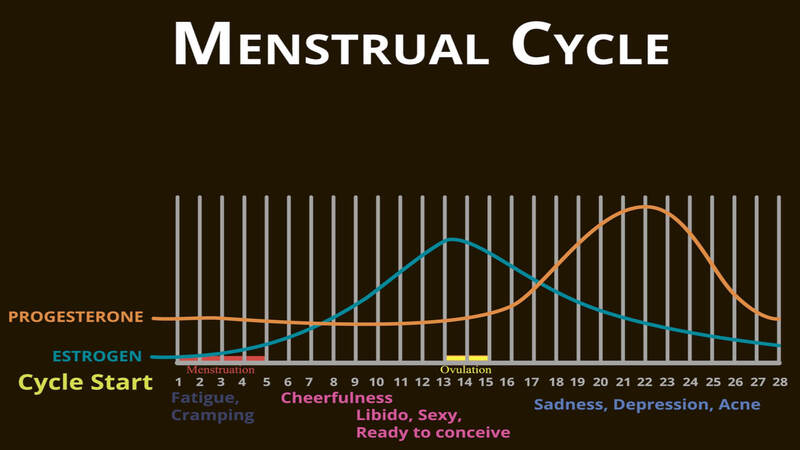
The implantation dip is a subtle but significant sign many women look for when trying to conceive. An implantation dip is a drop in basal body temperature (BBT) of at least 0.3 degrees, typically occurring about a week after ovulation, around the time implantation takes place. But how many degrees is an implantation dip? Typically, the temperature drop is around 0.2 to 0.5 degrees Fahrenheit. Understanding this phenomenon can help you track your fertility cycle more accurately and identify early pregnancy signs.
Trying to conceive can be challenging, as every sign of pregnancy feels significant, making the wait for a missed period difficult. In such a case, implantation dip can be an option for you to detect if there is a possibility of getting pregnant. But what is implantation dip? When does implantation occur? Or how to detect it? Don’t worry, we have all the answers for you. In this article, we’ll dive deeper into when the implantation dip happens, its causes, and how it can be an early indicator of pregnancy.
What is Meant by Implantation Dip?
An implantation dip refers to a temporary drop in a woman’s basal body temperature (BBT), which occurs around 6 to 12 days after ovulation, during the early stages of pregnancy. This slight dip happens when a fertilized egg implants itself into the uterine lining. It’s a subtle, short-term decrease in temperature, typically ranging from 0.2 to 0.5 degrees Fahrenheit, and lasts for only a day or two (1).
The reason for this dip isn’t completely understood, but it is believed to be related to the hormonal changes that occur during implantation. After ovulation, a woman’s body temperature remains elevated due to the hormone progesterone. If implantation occurs, the hormone levels shift slightly, which may cause a brief drop in temperature before it rises again.
While not all women experience this dip, some consider it an early indicator of pregnancy, though it is not a definitive sign. Tracking BBT over time and recognizing implantation dips can help women monitor their fertility and better understand their menstrual cycle.
Does Implantation Dip Indicate Pregnancy?

There is insufficient scientific evidence to provide a definitive answer to this question. According to one theory, the dip typically occurs on days 7 to 8, with actual implantation occurring on days 8 to 10 following ovulation.
As a result, the dip cannot be a perfect indicator of pregnancy. That is, you can be pregnant without the dip, and you won’t be pregnant even with it. As a result, the dip cannot be the sole determinant of your pregnancy.
Consider the dip to be one of many possible signs of pregnancy, rather than a sure sign.
How are Basal Body Temperature and Implantation Dip Connected?
BBT is the temperature of your body at rest. The hormonal changes in a female’s body affect her body temperature a bit. During the first phase of the menstrual cycle, i.e., the time before ovulation, the hormone estrogen is prevalent in a female’s body.
Due to this hormone, our body remains a few points of degrees cooler than the second phase of the menstrual cycle when the progesterone hormone is dominant. So, if you do a regular check on your BBT, then you will find that your body temperature rises a bit after the ovulation day.
You will also find that the temperature will fall just before and during your periods. But periods cannot start just after 7 days of ovulation. So, if there is a sudden temperature fall after 7 to 8 days of constant temperature rising, then it is called BBT ovulation dip or implantation dip.
BBT can be the simplest way to regulate what stage you are in your monthly cycle. To do it you will just have to check your temperature every day and note it down on a chart, which is called the implantation dip chart.
This BBT chart implantation dip, then will inform you about your upcoming ovulation and menstruation, and also sometimes about your upcoming pregnancy with the implantation dip.
Is there a Specific Period When Implantation Dip Occurs?

The implantation of a fertilized egg can occur between 6 to 12 days after ovulation (2). But in most cases, it happens around 8 to 10 days after. The more delayed the implantation, the higher the risk of a miscarriage.
A 1999 study shows that the risk of early pregnancy loss increases with later implantation, and most successful pregnancy implantation occurs between 8 to 10 days.
So in general, you can find out the ovulation dip during this period. And to understand how many days implantation takes, we say a fertilized egg requires only 8 to 10 days to be implanted on your uterus lining.
What are the Reasons for Implantation Dip?
When tracking your Basal Body Temperature (BBT) each day, you might notice a sudden temperature dip, which can occur even if you’re not pregnant. This raises the question: What does the temperature dip mean, and how reliable is it for predicting pregnancy?
- During the first phase of your menstrual cycle, estrogen predominates, which can cause a temperature dip.
- The implantation dip occurs due to a secondary surge in estrogen during the implantation of the fertilized egg.
- In a pregnant woman’s cycle, estrogen levels surge twice: once before ovulation and again in the middle of the luteal phase (second half of the cycle).
- These surges in estrogen can cause temperature fluctuations in early pregnancy, which might appear as a dip on your BBT chart.
- However, several other factors can also cause a temperature dip, such as stress, lack of sleep, and Medications
- Some women experience a delayed temperature rise after ovulation.
- Others may notice a temperature drop several days after ovulation due to factors like stress or poor sleep.
So, to conclude, we know sometimes it gets exhausting and impossible to get a positive result. But that does not mean you will cling to any hope that has the chance of disappointment. Be patient, wait two weeks after you note down the implantation dip.
Now, take a home pregnancy test after you miss your period. If the result is positive, then consult your gynecologist and do a blood test or an early ultrasound scan to confirm your pregnancy.
Read Also: Implantation Bleeding – Symptoms And Treatment
References
- Kaitlyn Steward; Avais Raja, University of Western States, Portland, Oregon – https://www.ncbi.nlm.nih.gov/books/NBK546686/
- Wilcox AJ, Baird DD, Weinberg CR. Time of implantation of the conceptus and loss of pregnancy. N Engl J Med. 1999 Jun 10;340(23):1796-9 – https://pubmed.ncbi.nlm.nih.gov/10362823/
